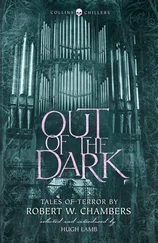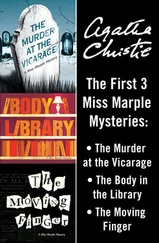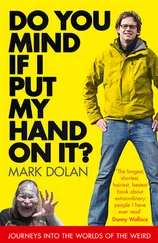Robert Monroe - Journeys out of the body, Practical Guidebook
Здесь есть возможность читать онлайн «Robert Monroe - Journeys out of the body, Practical Guidebook» весь текст электронной книги совершенно бесплатно (целиком полную версию без сокращений). В некоторых случаях можно слушать аудио, скачать через торрент в формате fb2 и присутствует краткое содержание. Жанр: Старинная литература, на английском языке. Описание произведения, (предисловие) а так же отзывы посетителей доступны на портале библиотеки ЛибКат.
- Название:Journeys out of the body, Practical Guidebook
- Автор:
- Жанр:
- Год:неизвестен
- ISBN:нет данных
- Рейтинг книги:5 / 5. Голосов: 1
-
Избранное:Добавить в избранное
- Отзывы:
-
Ваша оценка:
- 100
- 1
- 2
- 3
- 4
- 5
Journeys out of the body, Practical Guidebook: краткое содержание, описание и аннотация
Предлагаем к чтению аннотацию, описание, краткое содержание или предисловие (зависит от того, что написал сам автор книги «Journeys out of the body, Practical Guidebook»). Если вы не нашли необходимую информацию о книге — напишите в комментариях, мы постараемся отыскать её.
Journeys out of the body, Practical Guidebook — читать онлайн бесплатно полную книгу (весь текст) целиком
Ниже представлен текст книги, разбитый по страницам. Система сохранения места последней прочитанной страницы, позволяет с удобством читать онлайн бесплатно книгу «Journeys out of the body, Practical Guidebook», без необходимости каждый раз заново искать на чём Вы остановились. Поставьте закладку, и сможете в любой момент перейти на страницу, на которой закончили чтение.
Интервал:
Закладка:
• Holding the breath when unusual sensations are encountered.
Always be calm.
• Halting practice when unusual sensations occur when it is necessary to continue what brought about the sensations.
• Excessive excitement while performing direct techniques.
• Lack of aggression during attempts due to fatigue and sleep deprivation.
• Lack of a clear plan of action. Understanding and planning the use of distinct variations of the techniques beforehand is crucial to the analysis of subsequent errors in practice.
Exercises for Chapter 3
Questions
1. Which techniques should be mastered before proceeding to direct techniques?
2. Should results from the use of direct techniques be expected after several days or a week?
3. Is it better to practice direct techniques during the day or in the evening?
4. Is it correct to perform three direct attempts per day?
5. Which body position should be assumed when suffering from insomnia?
6. Which body position should be used by a person who falls asleep quickly?
7. How much time should be spent on a single direct attempt?
8. When can direct attempts be made for a longer period of time than usual?
9. What is the best way for an inexperienced practitioner to relax?
10. Can direct techniques substitute relaxation techniques?
11. Can relaxation techniques substitute direct techniques?
12. How many variations for performing direct techniques are there?
13. In what case is the variation of sequencing with direct techniques employed?
14. Which technique may not be used for direct entrance to the phase with the goal of creating a free-floating state of mind?
15. What happens to consciousness while in a free-floating state during direct techniques?
16. Should awakening be attempted if falling asleep occurred while using direct techniques?
17. What is the probability of entering the phase without a free-floating state of consciousness?
18. What do unsuccessful attempts using direct techniques most often end in?
19. Is sexual activity before an evening attempt using direct technique beneficial?
Tasks
1. Choose the best body position for direct techniques based on your individual preferences.
2. Use the classical variation of performing direct techniques until it phase entrance, or falling asleep several times.
3. Using a combination of variations for direct techniques, achieve a free-floating state of mind.
4. When performing direct techniques, try to achieve no less than three lapses in consciousness before 20 minutes elapse, or before you fall asleep. Repeat this challenge until phase entrance is achieved.
Chapter 4 – Becoming Conscious While Dreaming
THE CONCEPT OF TECHNIQUES INVOLVING
BECOMING CONSCIOUS WHILE DREAMING
The techniques for phase entrance via becoming conscious while dreaming are based on reaching consciousness and self-awareness during a dream, which, regardless of dream quality, can be transitioned into a fully realized phase experience. Contrary to popular opinion, having an out-of-body experience through dreaming differs little from other techniques; the primary results of which may be persistently categorized as dissociative experiences: being fully conscious while removed from the perception of a physical body.
The realism of a phase induced through becoming conscious in a dream does not differ from phases entered using other techniques, and, when deepened, the phase offers more vivid and lucid experiences than those of everyday life.
If a practitioner becomes aware of a dream while in it (usually accompanied by a clear realization that it is, “just a dream”), then the phase is experienced from that moment forward.
Beginners often confuse the notion of becoming conscious while dreaming with induced dreaming. An induced dream is the dream of a specific topic, provoked on demand; this does not presuppose consciousness. Moreover, not all practitioners clearly understand what it means to be fully conscious while dreaming. Consciousness while dreaming is always present to some extent, but it is necessary to be as conscious as one would be in a wakeful state. Awareness is not possible as long as the plot of the dream continues. When full understanding occurs that everything around is just a dream, a person drops the dream and starts doing only what he wants to do at that very moment. And after awakening, he should not think that what happened was absurd or unexplainable.
During the process of becoming conscious in a dream, a practitioner’s actions must be completely subordinated to the desire to experience a quality phase. This is why, upon becoming conscious in a dream, proceeding to techniques related to deepening and maintaining is crucial.
Techniques for becoming conscious in a dream differ very much in nature from other techniques, and there are good reasons why these methods are differentiated from other practices, like so-called astral projection or out-of-body experience (OBE) . However, their characteristics differ very little in terms of results.
The technique-related peculiarities rest in the fact that specific actions are not required to produce immediate, concrete results. All technique-related elements are performed outside of when consciousness while dreaming occurs. This is because it is impossible to take some action if you are not conscious and do not realize that you are dreaming. All efforts are directed at making that very realization somehow occur.
Interesting Fact!
Even if a practitioner pays no heed to the techniques for becoming conscious while dreaming, but applies direct or indirect techniques, on average each fifth phase will still occur through becoming conscious in a dream. This has been statistically proven at seminars of the School of Out-of-Body Travel.
Many strive to achieve consciousness during each dream over the course of an entire night; however, this is rarely possible due to physiological barriers. There is a good reason that sleep and dreams are an important part of a human life. There is an important need to switch off not only body, but also consciousness, so that it may unconsciously sift and process the vast volume of information obtained in everyday life.
The timeframe for achieving conscious dreaming is very difficult to estimate due to the nature of required actions. Intensity and intention definitely exert heavy influence. A practitioner may become conscious in a dream when first lapsing into sleep, regardless of when it occurs. Or, with regular attempts, this could happen in two weeks to a month. Nevertheless, these techniques promise a much higher likelihood of success than direct methods, and can be compared with indirect techniques - inferior to the latter only in terms of the speed at which results are achieved and the amount of effort required. While indirect techniques yield maximum results in light of a full night’s rest, the amount of time spent in bed is not a significant factor to achieving dream consciousness. Therefore, this technique is sure to guarantee entry into the phase, especially if difficulty has been encountered while practicing other techniques.
Techniques used to attain dream consciousness should not be combined with other types of techniques. It is better to focus on one thing at a time. Interestingly, when a technique is practiced on a regular basis, there is nearly a 100% guarantee that dream consciousness will spontaneously occur. A practitioner must know how to react when this happens.
TECHNIQUES FOR BECOMING
Читать дальшеИнтервал:
Закладка:
Похожие книги на «Journeys out of the body, Practical Guidebook»
Представляем Вашему вниманию похожие книги на «Journeys out of the body, Practical Guidebook» списком для выбора. Мы отобрали схожую по названию и смыслу литературу в надежде предоставить читателям больше вариантов отыскать новые, интересные, ещё непрочитанные произведения.
Обсуждение, отзывы о книге «Journeys out of the body, Practical Guidebook» и просто собственные мнения читателей. Оставьте ваши комментарии, напишите, что Вы думаете о произведении, его смысле или главных героях. Укажите что конкретно понравилось, а что нет, и почему Вы так считаете.










